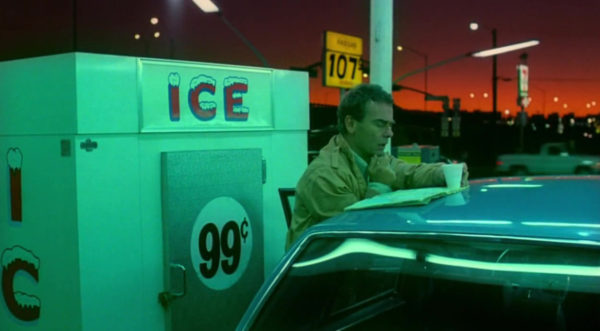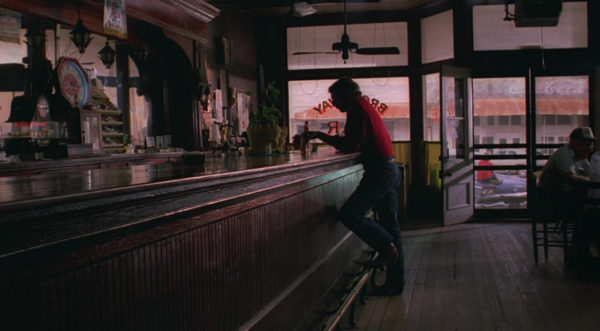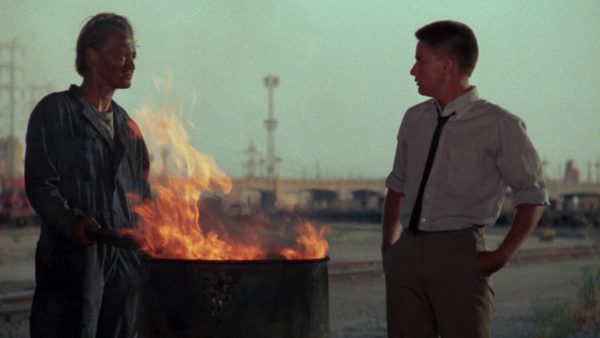Tom Jolliffe takes a look back at the work of cinematographer Robby Müller…
The cinematic process involves a mass of people. Whether you’re an indie production shooting for no money, or the biggest film on the planet, it takes a team to make things happen. Actors get on screen and take most of the acclaim of course, then there’s plenty left for directors to soak up, sometimes writers, occasionally composers (because their job is so clearly defined and heard). Still, ask the man on the street to name five cinematographers…it’s probably not going to happen.
An unsung artistic equation at times, the director of photography (or cinematographer, or DOP, or DP, or light wrangler…okay, I made the last one up) is tasked with making the directors choice of shot look that extra bit special. Ironically, though Joe Public often doesn’t have that in-depth a knowledge of the crew members (or names specifically), cinematography is still one of the plum awards come Oscar season. I mean, it’s very well sought after. Indeed, general movie goers will of course acknowledge that a film looks great, but put the praise more squarely at the director. That can often be true to an extent. After all most auteur film-makers have a very distinct style. Many have/had photographic backgrounds themselves. But for the added time, stress and workload, they’d likely do the job themselves (some have in Indie productions of course). Kubrick and Tarkovsky both had distinct styles and photographic eyes, and aided by their DP would craft films of sheer and consistent beauty. Some of the best directors will often stick with a regular DP, knowing they have someone who can bring their vision to life as beautifully as possible.

Step back to Germany in the 70’s and Wim Wenders was establishing himself with a number of intimate indie films. From Alice in the Cities, to Wrong Move to Kings of The Road, Wenders made essential German cinema. Whether shooting in colour or black and white, whether those colours were rich and intense, or muted and gritty, one thing is consistent…the photography is stunning. Wenders had a long standing partner in crime in Robby Müller (a Dutch born cinematographer).

Müller’s career would stay somewhat under the radar. The first significant breakout for Wenders was The American Friend. A director with a poetic vision and restraint, teamed with his DOP who could bring an almost ethereal quality that still felt authentic. Few cinematographers could combine a real authenticity with other worldly allure like Müller. As a unit they made great films. The American Friend, which was an early, and probably still the best, adaption of Ripley’s Game. A dour, almost brutalist (in places) West Germany was always made to look exquisite by Müller, and very much so in this Euro-noir thriller.

A real point of interest for one of the most iconic works with Wenders and his trusted DP, was the foreign gaze upon Southern states America. A land of dry oranges and dusty browns. Of long, wide expanses of never-ending and sandy terrain (punctuated by blue sky and intense sun). In Paris, Texas, the pair craft one of cinemas most beautifully shot films that takes a harsh and unforgiving land and makes it poetic. Then the same in the blue collar cities they visit. It’s not a world of persistent, relentless and dazzling neons, yet there’s striking use of colour in this film. It shouldn’t feel natural, but it does, all the while feeling ethereal. The imagery combines perfectly with a beautifully written script and a laconic, drawling, and atmospheric slide guitar score from Ry Cooder.
This began a string of American films lensed by Müller. Next up was the cult classic, Repo Man. Alex Cox’s career as potential visionary director, never quite matched up to his first couple of films (the other being Sid and Nancy). The success of his first two perhaps lead to more than necessary indulgence in his next, but one aspect that never quite matched in his films beyond, was the photography. Repo Man for one is dazzling. It’s got all those flourishes you would expect from Müller, which help to elevate the image in this bizarre crime comedy. It’s an enjoyable film that is rightly a cult classic, but there’s some absolutely beautifully poetic shots that just give it something a bit extra. It makes the film feel almost art-house rather than simply culty. It’s a big element as to why it’s part of the Criterion collection.
Müller would likewise go onto aid a few great directors in elevating the imagery of what you might call run of the mill ideas. Certainly in To Live and Die In L.A, there’s a distinctive vision you get from someone like Friedkin, but likewise he’s helped enormously by a cinematographer with a unique eye. Again, it’s almost wilfully made to look unlike a conventional genre film, and that makes the film stand out as special. You often need a special director who will push for a DOP to bring a ‘different’ eye to proceedings, and you could indeed look at Michael Mann bringing Dante Spinotti onto Manhunter.
Hollywood would have a habit of not quite appreciating genius, mixed perhaps with an artistic mentality that demands an artistically minded director (after all, not every film can wait for magic hour persistently through a shoot, etc) to push for an unconventional stylist. Still, as his career progressed Müller still managed to build a working relationship with Jim Jarmusch and Lars Von Trier. Ultimately it may surprise that he didn’t do many big Hollywood films. It wasn’t for the lack of offers, but more a dislike of the way American movies were made and a slight creative stifling. If a director often struggles to win a butting of heads with producers, then a DOP certainly will.
The late Müller certainly leaves behind an envious CV of beautifully photographed films and indeed a legacy that has inspired many a photographer and director since. So next time someone asks you on the street to name a cinematographer, hopefully you’ll remember Robby Müller.
Tom Jolliffe is an award winning screenwriter and passionate cinephile. He has a number of films out on DVD/VOD around the world and several releases due in 2020, including The Witches Of Amityville Academy (starring Emmy winner, Kira Reed Lorsch) and Tooth Fairy: The Root of Evil. Find more info at the best personal site you’ll ever see here.














